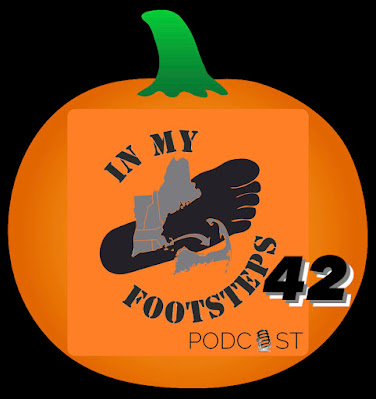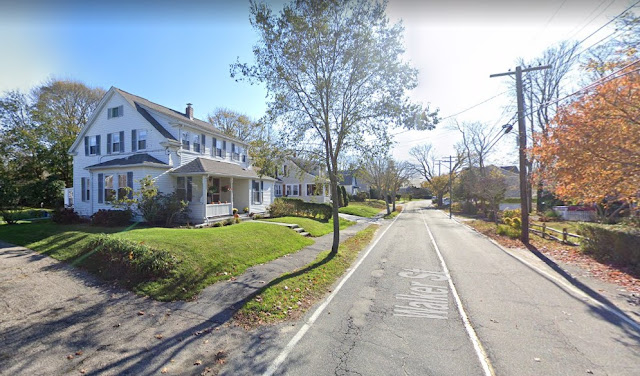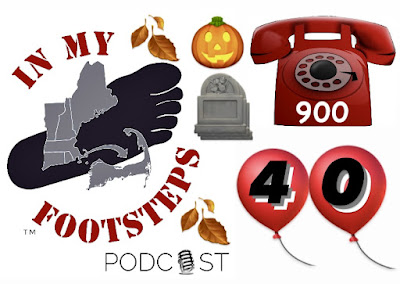McDonald’s, Wendy’s, Burger King, Kentucky Fried Chicken, Taco Bell, and more are what pops to mind when thinking of the most popular fast food chains in history. Each of these has at least one location on Cape Cod and hundreds, if not thousands of locations worldwide. However did you know when looking back that the very first fast food chain to break ground on the Cape was none of the above? In fact it was a spot that came and went rather quickly and is somewhat lost to the passage of time. The very first fast food spot was a hamburger spot called Kemp's of America and this is a little bit about its history.
In terms of overall history, the first true fast food hamburger restaurant was White Castle which was founded in Wichita, Kansas in 1921. The 1950’s saw the dawn of many prominent fast food chains including Jack In the Box(1951), Burger King(1953), Sonic(1953), and the franchising of already established places like McDonald’s and Kentucky Fried Chicken.
Though ripe with competition there were still some who saw opportunity in the crowded fast food market. This included Boston business executive Lawrence Laskey who created Kemp’s of America in 1963 and opened its first location in 1964 in Saugus, Massachusetts. Other locations soon followed in Medford, Fall River, Brockton, Worcester, Burlington, and Nashua, New Hampshire. By late 1964 Kemp’s was considered one of the fastest growing chains in the country.
 |
| Advertisement for the opening of the Roxbury Kemp's from Oct. 1964(Boston Public Library) |
Kemp’s offered 15-cent hamburgers, 20-cent cheeseburgers, 15-cent hot dogs, 12-cent shoestring french fries, 20-cent milkshakes, and even a fish fry. Sporting the slogans of the ‘best in the world’ and ‘the nation’s favorite’ it was not long until Kemp’s made its way to Cape Cod.
Talks for a location on the Cape began in December 1964. It was settled on Hyannis as the site of what would be the 26th Kemp’s restaurant. A section of Iyannough Road almost directly across the street from the iconic Mildred’s Chowder House was where construction began.
The new Hyannis location, a yellow building complete with a black cow on the top, opened late in the spring of 1965. It was overshadowed by the first Boston-proper location that opened in July 1965 at 632 Washington Street. The manager of the Hyannis location was Ray Cadrin who would go on to have a long and distinguished career in Cape Cod restaurants.

An old Kemp's sign in Boston 1971(WorthPoint.com)
Kemp’s became an immediate hit with kids and families. The company sponsored youth baseball and gave the added incentive of free hamburgers and milkshakes after every win. Lawrence Laskey was front and center promoting Kemp’s and the company’s growth. He predicted the chain would have more than one hundred locations by the end of 1966. This was set to include a second Cape Cod location in Falmouth. Neither of the predictions came true. It is unclear though just how many restaurants Kemp’s had at its peak.
Despite doing fairly well business-wise, and being popular locally, Kemp’s could not stave off the encroachment of other fast food chains. McDonald’s came to the Cape in 1969 with a location on Rt. 132, little more than half a mile from Kemp’s. Wendy’s, Burger King, Kentucky Fried Chicken, Jack in the Box, and Burger Chef, among others, also came to Cape Cod in that same time period. These additional options for customers spelled doom for the smaller Kemp’s.
The Hyannis location of Kemp’s closed in 1973 with the building becoming the home of Mr. Donut in 1975. Slowly Kemp’s locations closed down across the state. After the Hyannis location closed former manager Ray Cadrin landed on his feet. He opened the very popular Ray’s Sub Shop not long after on Center Street in Hyannis. Cadrin operated that establishment until his retirement in 1995.
The last location of Kemp’s that remained is difficult to confirm. A location on Boylston Street in Boston was still in operation in 1978. However the company itself was dissolved in 1980. Regardless of where the last location stood in the end Kemp’s was faced with overwhelming competition from far larger chains and was eventually squeezed out.
 |
| The site of the former Kemp's(Google Maps) |
Today on Cape Cod the larger fast food chains remain strong. The only thing to remain of Kemp’s is the memories from those who went there during its brief run as the original fast food spot on the Cape. As of 2021 Honey Dew Donuts occupies the property that once house Kemp’s of America.
----------------------------------------------------------------
Previous Blog Posts:










